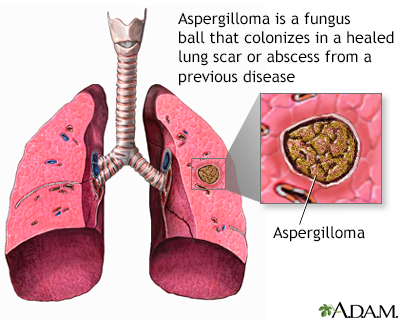
Humans are estimated to have upwards of 20,000 protein-coding genes, each of which plays a unique functional role in our biology. Considering the various mutations that may be present across genetic loci as well as the interplay of these factors, it may quickly become an overwhelming topic to review. To support researchers looking for regular information on genetic targets of interest, we have developed our Weekly Gene series to introduce the development trend and future direction of research across human genes. Cyagen’s Weekly Gene series provides insights into popularly researched genes, their basic information, research overview, and application background of the gene in detail. This week’s subject is MARCHF2 (Membrane Associated Ring-CH-Type Finger 2), which is a Protein Coding gene. Diseases associated with MARCHF2 include Subclavian Steal Syndrome and Pulmonary Aspergilloma.
Overview of MARCHF2 Gene
MARCH2 is a member of the MARCH family of membrane-bound E3 ubiquitin ligases (EC 6.3.2.19). MARCH enzymes add ubiquitin to target lysines in substrate proteins, thereby signaling their vesicular transport between membrane compartments. MARCH2 reduces surface accumulation of several glycoproteins and appears to regulate early endosome-to-trans-Golgi network (TGN) trafficking.[1-2] Nobuhiro Nakamura and colleagues have identified MARCH-II, which is ubiquitously expressed and localized to endosomal vesicles and the plasma membrane. Immunoprecipitation and in vitro binding studies established that MARCH-II directly associates with syntaxin 6. Overexpression of MARCH-II resulted in redistribution of syntaxin 6 as well as some syntaxin-6-interacting soluble N-ethylmaleimide-sensitive factor attachment protein receptors (SNAREs) into the MARCH-II-positive vesicles.

Figure 1. Schematic diagram of subcellular location (Source: Uniprot)
E3 ubiquitin-protein ligase that may mediate ubiquitination of TFRC and CD86, and promote their subsequent endocytosis and sorting to lysosomes via multivesicular bodies. E3 ubiquitin ligases accept ubiquitin from an E2 ubiquitin-conjugating enzyme in the form of a thioester and then directly transfer the ubiquitin to targeted substrates. This protein is involved in the pathway protein ubiquitination, which is part of Protein modification. It may be involved in endosomal trafficking through interaction with STX6. [3]

Figure 2. AlphaFold structure prediction (MARCHF2) (Source: Uniprot)
Diseases Related to the MARCHF2 Gene
Subclavian Steal Syndrome
MalaCards based summary: Subclavian Steal Syndrome, also known as subclavian steal steno-occlusive disease, is related to angina pectoris and intermediate coronary syndrome. An important gene associated with Subclavian Steal Syndrome is DHRS4L2 (Dehydrogenase/Reductase 4 Like 2). Affiliated tissues include lymph node, brain and heart, and related phenotypes are Decreased shRNA abundance (Z-score < -2) and Decreased shRNA abundance (Z-score < -2).
The subclavian steal syndrome is characterized by a subclavian artery stenosis located proximal to the origin of the vertebral artery. In this case, the subclavian artery steals reverse-flow blood from the vertebrobasilar artery circulation to supply the arm during exertion, resulting in vertebrobasilar insufficiency. As the vertebrobasilar arterial system feeds both the peripheral and central auditory and vestibular systems, in subclavian steal syndrome, neurotological symptoms are expected because of the vertebrobasilar insufficiency. In a report by G Psillas and colleagues, they describe three patients suffering from subclavian steal syndrome, who presented with isolated dizziness, recurrent vertigo, hearing loss, and tinnitus.

Figure 3. Schematic drawing of the circulation involved in subclavian steal phenomena and the flow adaptation in response to a proximal subclavian stenosis. [4]
Pulmonary aspergilloma
Pulmonary aspergilloma is a mass caused by a fungal infection that usually grows in lung cavities, but the infection can also appear in the brain, kidney, or other organs. Aspergillosis is an infection caused by the fungus aspergillus. Aspergillomas are formed when the fungus grows in a clump in a lung cavity.

Figure 4. Pulmonary aspergilloma information (Source: Mount Sinai)
Visit the next article below, in which we provide details on the applications of mouse models used for Marchf2 gene studies and new research progress.
>>Learn more: Marchf2 Mice and New Research Progress
Cyagen Knockout Catalog Models covers gene knockout mice and conditional knockout mice. We can provide you with Marchf2 knockout mice. We can also generate exclusive customized models for you, contact us to see what research model strategies our experts have for your next study.
References:
[1] Bartee E, Mansouri M, Hovey Nerenberg BT, Gouveia K, Früh K. Downregulation of major histocompatibility complex class I by human ubiquitin ligases related to viral immune evasion proteins. J Virol. 2004 Feb;78(3):1109-20. doi: 10.1128/jvi.78.3.1109-1120.2004. PMID: 14722266; PMCID: PMC321412.
[2] Nakamura N, Fukuda H, Kato A, Hirose S. MARCH-II is a syntaxin-6-binding protein involved in endosomal trafficking. Mol Biol Cell. 2005 Apr;16(4):1696-710. doi: 10.1091/mbc.e04-03-0216. Epub 2005 Feb 2. PMID: 15689499; PMCID: PMC1073653.
[3] Fukuda H, Nakamura N, Hirose S. MARCH-III Is a novel component of endosomes with properties similar to those of MARCH-II. J Biochem. 2006 Jan;139(1):137-45. doi: 10.1093/jb/mvj012. PMID: 16428329.
[4] Potter BJ, Pinto DS. Subclavian steal syndrome. Circulation. 2014 Jun 3;129(22):2320-3. doi: 10.1161/CIRCULATIONAHA.113.006653. PMID: 24891625.
We will respond to you in 1-2 business days.